
Troubleshooting Safety
Locking out the Disconnect – LDL
Lockout and LDL (Live-Dead-Live) Testing must be performed before:
- Wires are disconnected
- Resistance measurements are taken
- Components are replaced
- Relays or Contactors are manually actuated
Hover the cursor over the breaker blade. A little hand will appear. Click.
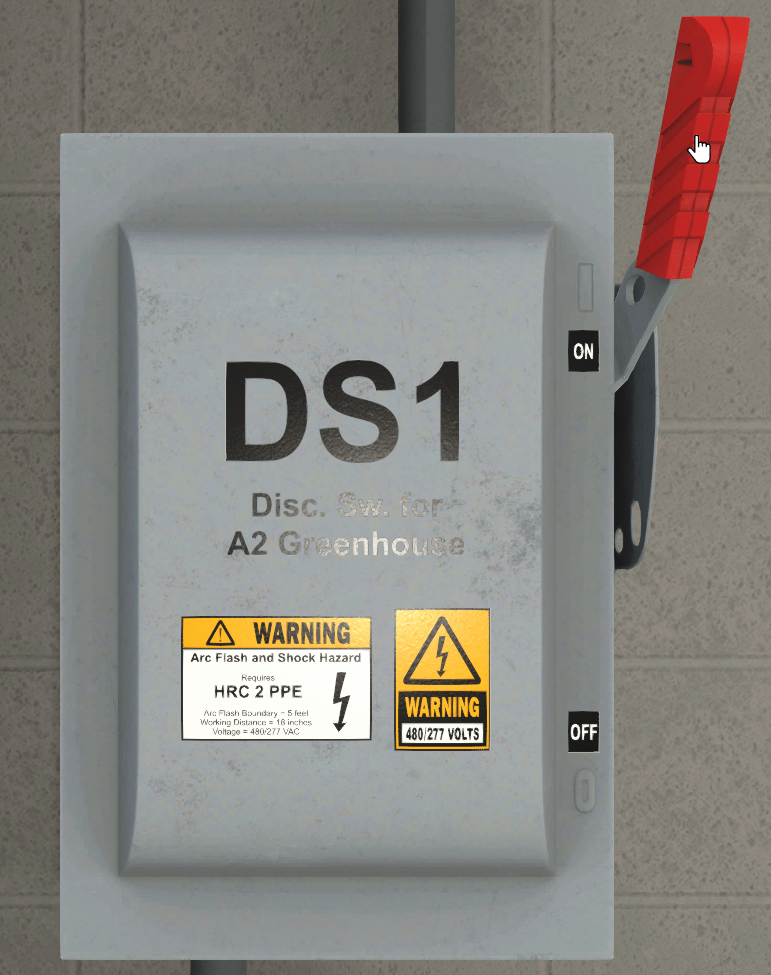
Main Disconnect
The Breaker will switch from ON to OFF.
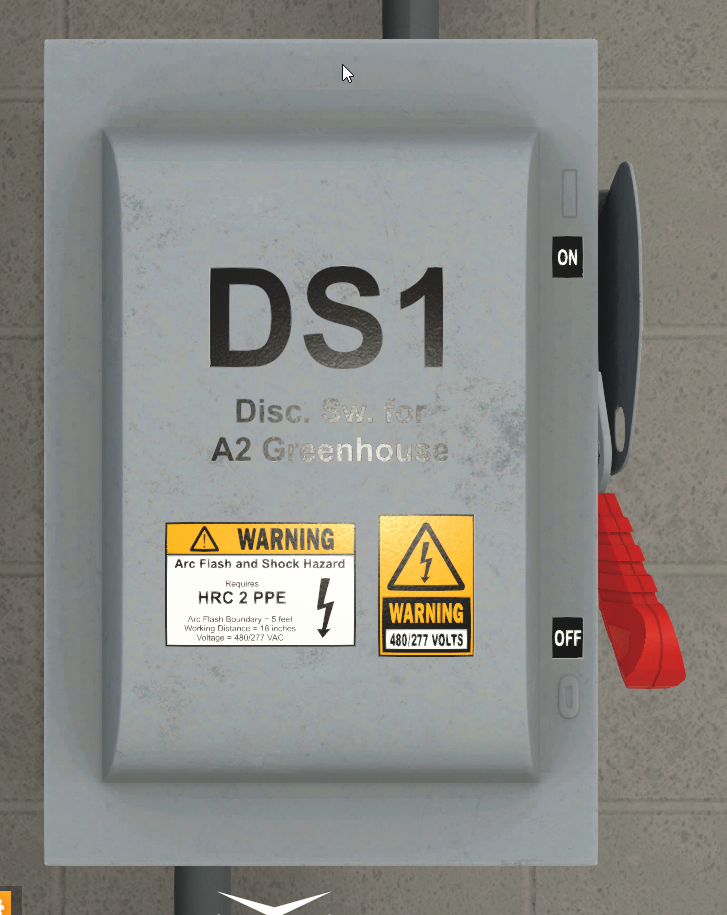
Main Disconnect off
Next click on the lock icon. The following message will appear. Select YES to confirm.

Toolbar Lock
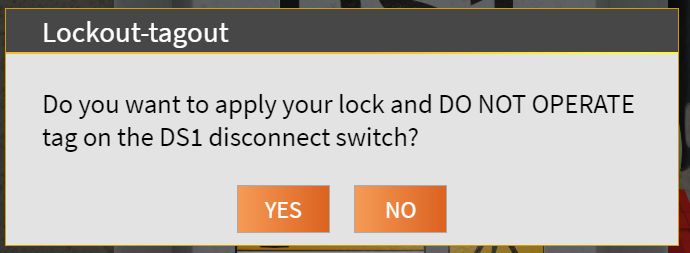
LDL Lock
The Live-Dead-Live Test Results will display on screen and you will see a lock on the Main Disconnect blade. Click on Accept Test Results and conduct your test measurements.
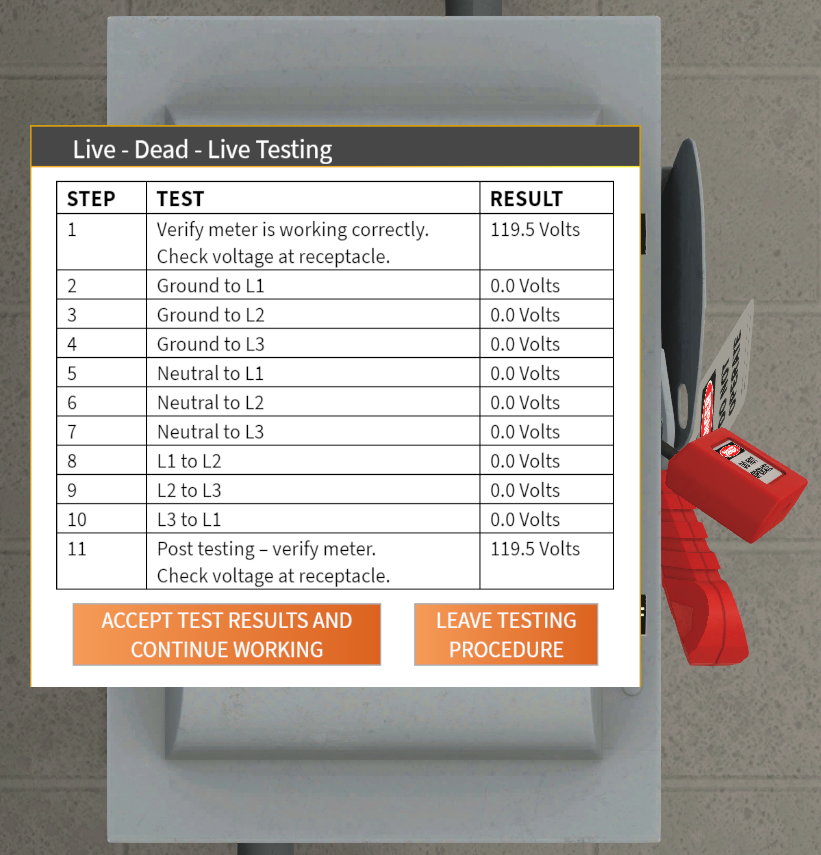
LDL confirm
Returning Power to the Disconnect
The following steps will return power to the system after an LDL lockout/tagout.
To turn the power back on, click on the lock on the lower right toolbar. This will remove the lock.
Then click on the Disconnect blade. The blade will move up to the ON position and power will be restored.
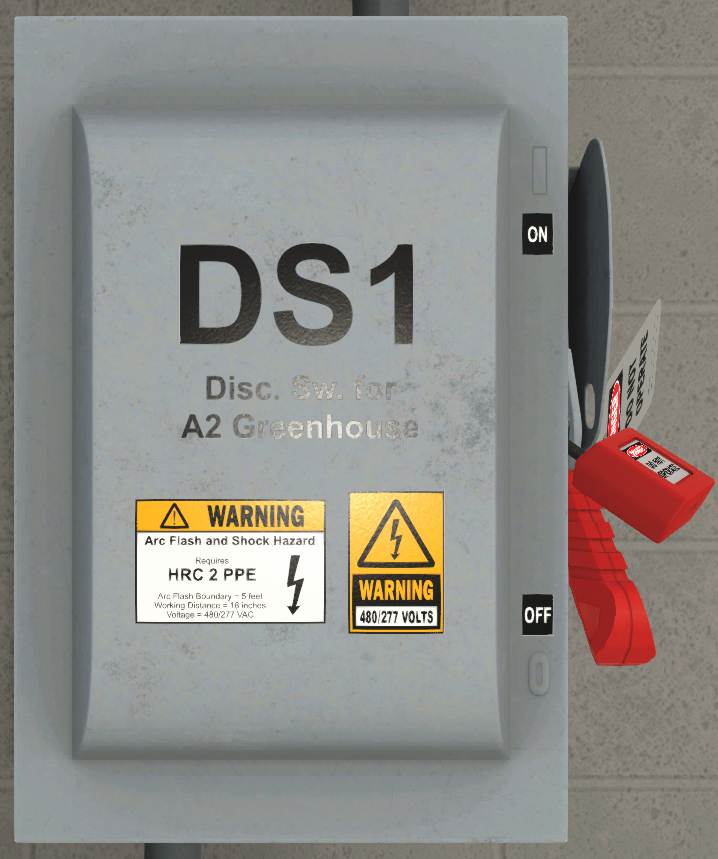
Main Disconnect locked

Main Disconnect off

Main Disconnect
Troubleshooting and Error Messages
Troubleshooting on real equipment can be hazardous. To ensure you learn how to troubleshoot safely, the simulator monitors all your activities and will notify you when safety errors occur.
The program will monitor for the following types of errors:
- Personal Injury Errors caused by contact with live electrical equipment
- Live Circuit Errors caused by performing work other than approved testing on a live circuit
- Safe Work Practices caused by violating lockout/tagout procedures
- Safety Tips
- Meter Tips are messages that help refine your troubleshooting process
Your organization may have additional safety protocols for troubleshooting equipment. It is important that you understand and follow any company policies regarding safety.
Personal Injury Errors
Personal Injury Errors occur when the activity you are attempting to perform causes you or your tools to contact live equipment and could cause personal injury or equipment damage. They usually have the heading “Zap! Electrical Contact” and are accompanied by an electrical shock sound.
They will occur if you attempt to:
- Take an ohmmeter reading on a live terminal
- Energize a circuit with an ohmmeter connected to a terminal that may become live
- Connect or disconnect a wire on a live terminal
- Connect or disconnect live wires using a wire connector
- Replace a component which has one or more live terminals
- Perform an inspection on a component which has one or more live terminals
Making one of these errors while troubleshooting a fault will cause you to exit the simulator immediately after clicking on the OK button.
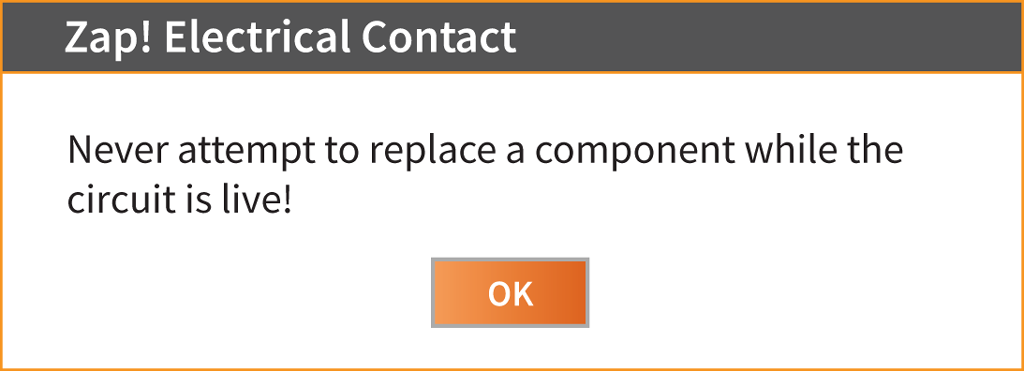
ZAP replace live
Live Circuit Errors
Live Circuit Errors occur when certain actions other than approved testing are performed on a live circuit and have a high risk of electrical contact causing personal injury or equipment damage. “Stop! Live Circuit”
To avoid getting these errors, ensure the circuit is Locked Out and LDL has been performed and accepted before attempting to:
- Take an ohmmeter reading
- Connect or disconnect a wire
- Replace a component
- Perform and inspection on a component
- Remove or Replace a fuse

ZAP replace live
Additionally, Live Circuit Errors will occur if you attempt to:
- Energize a circuit with an ohmmeter connected to a non-grounded portion of the circuit
When any of the above occur, the simulator will notify you of the error and prevent the action from happening. Clicking the OK button will eject you from the simulation.
Safe Work Practices Errors
Safe Work Practice Errors occur when the action performed has broken lockout/tagout principles or other safe work practices. These types of errors usually begin with “Caution! Safety Violation”
To avoid getting these errors, ensure the circuit is Locked Out and LDL has been performed and accepted before attempting to:
- Take an ohmmeter reading
- Connect or disconnect a wire
- Replace a component
- Perform and inspection on a component
Additionally, a warning will occur if you attempt to:
- Remove the lockout from a circuit with an ohmmeter connected to a non-grounded portion of the circuit.
When any of the above occur, the simulator shows a warning message like the one shown below. Clicking OK will return you to the circuit
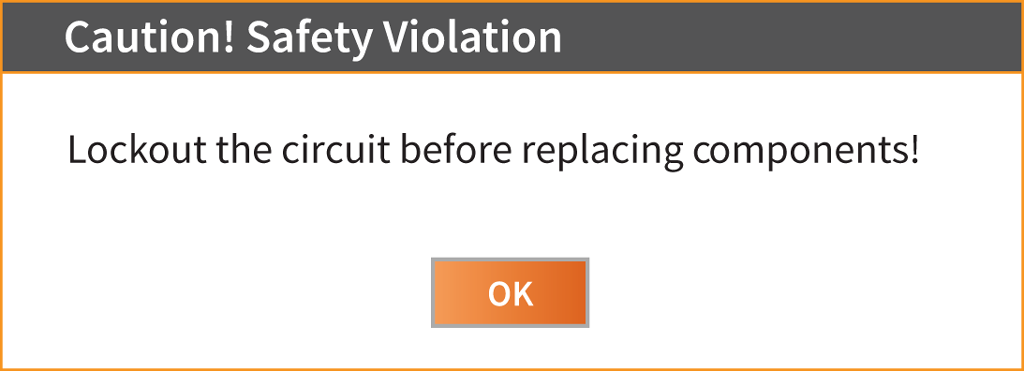
Caution lockout components
